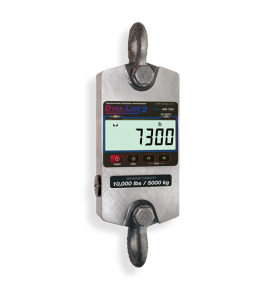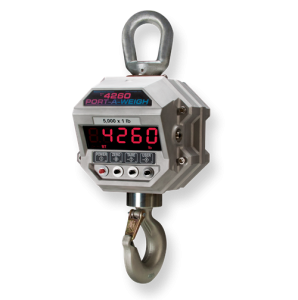Dynamometers VS. Crane Scales
When looking at overhead weighing solutions, people always ask us the differences between dynamometers and crane scales. This question often leads to a conversation on the right situation to use a crane scale over a dynamometer. Initially, they may appear to be very similar pieces of equipment, but they each have their specific uses and are not always interchangeable.
How are they Different?
If you live within a 200-mile radius of Kentucky, you’ve probably heard the age-old adage all bourbons are whiskeys, but not all whiskeys are bourbons. A similar concept applies to crane scales and dynamometers. All crane scales are dynamometers, but not all dynamometers are crane scales.
What is a Dynamometer?
So, what exactly is a dynamometer? Dynamometers come in all shapes, sizes, and designs, but they all do one basic thing, measure the tensile force between two points. Basic dynamometers utilize a spring to measure this force, while more advanced models use load cells and digital indicators. For dynamometers, the gauge’s orientation is not a factor. As long as force is applied to both ends in a straight line, there will be an accurate measurment. This fact means dynamometers can be used to measure other types of force beyond weight. One of the most common uses for dynamometers is to measure the tension on cables and wires.
What is a Crane Scale?
Crane scales are one of many specialized types of dynamometers. Often outfitted with a shackle and onboard indicator, these scales are specifically designed to measure the verticle force created by a suspended load. The main advantage and disadvantage of crane scales are that they are purpose-designed. This design means they are incredibly efficient at weighing suspended loads, but they aren’t useful for many other applications. Many crane scales are also outfitted with large rugged shells designed to withstand more abuse than standard dynamometers. Although weight should always be taken at rest, crane scales are also designed to withstand the movement from bridging and trolleying.
Should You Use a Crane Scale or a Dynometer
Adding a crane scale or dynamometer to your suspended load processes is a small change that has a major impact on efficiency and safety. These tools are easy to install and have virtually no impact on a crane’s functionality. Since these devices hook directly into your payload, you can immediately measure weight without the need for floor scales, multiple lifts, and the balancing act required to weigh large awkward items. The question is which one is right for your application. If you need to quickly and efficiently measure the weight of a variety of suspended loads and plan to move those loads, a crane scale is the answer. If you want to measure the force applied to your lifting cable and have minimal horizontal movement, or just need to perform a one-off measurement like a load test, a dynamometer could be your best solution.
Don’t Know What to Purchase?
When it comes to suspending weighing, there are a lot of factors to consider. Our team of weighing experts are prepared to help you pick the correct crane scale for your application. Fill out the form below.







